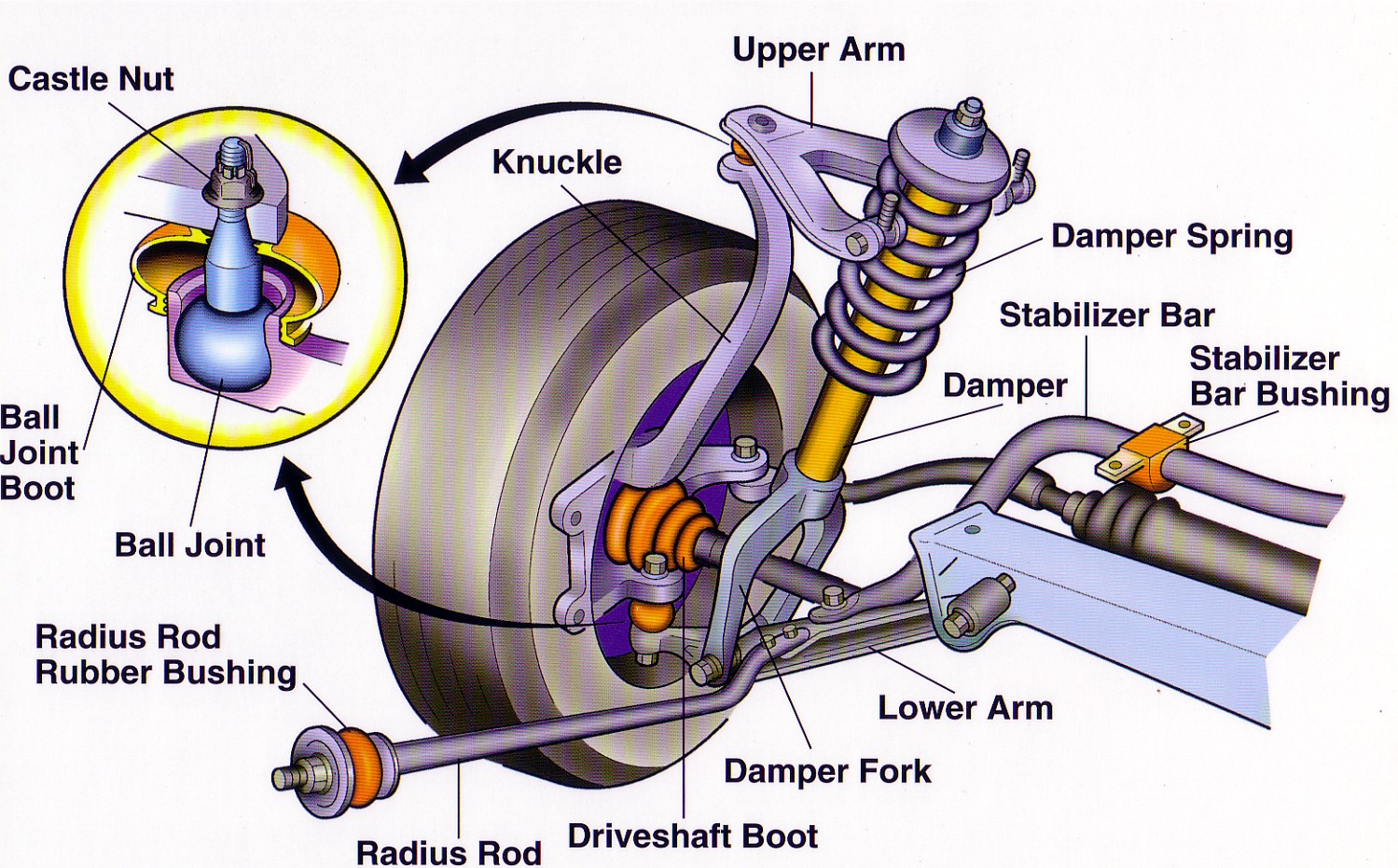Car suspension diagrams are essential for understanding how vehicles maintain stability, comfort, and control on the road. This intricate system plays a pivotal role in the overall performance of a vehicle, ensuring that wheels stay in contact with the road surface while absorbing shocks from uneven terrain. In this article, we will delve into the various components of car suspension systems, their types, and how they contribute to the safety and comfort of a vehicle.
Understanding the car suspension diagram is not only crucial for automotive enthusiasts but also for anyone looking to maintain or repair their vehicle. By grasping the fundamentals of suspension systems, you can make informed decisions regarding vehicle maintenance, upgrades, or repairs. Throughout this comprehensive guide, we will cover various aspects of car suspension diagrams, including their significance, types, and detailed breakdowns of different suspension components.
As we explore the intricacies of car suspension diagrams, we will also examine the relationship between suspension design and vehicle performance. Whether you are a car owner, a mechanic, or simply curious about how cars work, this guide will equip you with valuable insights into the world of automotive suspension systems.
Table of Contents
- What is Car Suspension?
- Importance of Car Suspension
- Types of Suspension Systems
- Components of Car Suspension
- Understanding Car Suspension Diagram
- Common Suspension Issues
- Maintaining Your Car's Suspension
- Conclusion
What is Car Suspension?
The car suspension system is a combination of various components that work together to support the weight of the vehicle, absorb shocks from the road, and ensure optimal handling and control. It connects the vehicle's body to its wheels and helps maintain tire contact with the road surface. Without an effective suspension system, your vehicle would experience excessive bouncing, poor handling, and a significantly reduced level of comfort.
Importance of Car Suspension
Car suspension systems are vital for several reasons:
- Safety: A well-functioning suspension ensures stable handling and prevents loss of control while driving.
- Comfort: Suspension systems absorb road shocks, providing a smoother ride for passengers.
- Tire Wear: Proper suspension alignment helps maintain even tire wear, extending tire life.
- Vehicle Performance: A good suspension system enhances overall vehicle performance, improving cornering and braking.
Types of Suspension Systems
There are several types of suspension systems used in vehicles, including:
1. Independent Suspension
In independent suspension systems, each wheel is connected to the vehicle's frame independently, allowing it to move up and down without affecting the opposite wheel. This design offers improved ride quality and handling.
2. Dependent Suspension
Dependent suspension systems connect the wheels on the same axle, meaning when one wheel moves, the other will move as well. This type is often found in older vehicles and is simpler in design but can compromise ride quality.
3. MacPherson Strut Suspension
This is a widely used independent suspension design that combines a shock absorber and a coil spring into a single unit. It offers a compact design and is commonly found in front suspensions of many modern cars.
4. Multi-Link Suspension
Multi-link suspension systems use multiple arms to connect the wheel hub to the chassis. This design allows for greater adjustability and improved handling, making it popular in high-performance vehicles.
Components of Car Suspension
The car suspension system consists of several critical components:
- Shock Absorbers: These components dampen the energy from bumps and vibrations, providing a smooth ride.
- Coil Springs: Springs support the vehicle's weight and absorb shock from the road.
- Control Arms: These are hinged links that connect the suspension to the vehicle frame, allowing for controlled movement.
- Ball Joints: These provide a pivot point for the control arms, allowing for smooth wheel movement.
- Stabilizer Bars: These bars help reduce body roll during cornering by linking opposite wheels together.
Understanding Car Suspension Diagram
A car suspension diagram visually represents the various components and their relationships within the suspension system. Below is a simplified diagram of a typical car suspension:

This diagram illustrates key components such as shock absorbers, springs, control arms, and stabilizer bars. Understanding this diagram is crucial for diagnosing suspension issues and performing maintenance.
Common Suspension Issues
Several issues can arise in car suspension systems, including:
- Worn Shock Absorbers: Diminished shock absorption leads to a rough ride.
- Broken Springs: A broken spring can cause the vehicle to sag or lean to one side.
- Loose or Worn Control Arms: This can result in poor handling and increased tire wear.
- Misaligned Suspension: Misalignment can cause uneven tire wear and poor steering response.
Maintaining Your Car's Suspension
Regular maintenance of your car's suspension is vital to ensure safety and performance. Here are some essential maintenance tips:
- Perform regular inspections of shock absorbers and springs for signs of wear.
- Check for leaks in the shock absorbers.
- Have your vehicle's alignment checked periodically.
- Replace worn or damaged components promptly to prevent further issues.
Conclusion
In conclusion, understanding car suspension diagrams is crucial for anyone interested in vehicle maintenance and performance. This guide has provided insights into the importance of suspension systems, the types available, key components, and common issues that can arise. By being informed about your car's suspension, you can ensure a safer and more comfortable driving experience.
If you found this article helpful, please leave a comment, share it with others, or explore more articles on our website to expand your automotive knowledge!
Thank you for reading, and we hope to see you again soon!
Understanding Ozem ETF: A Comprehensive Guide
Wuthering Waves 1.1 Banners: A Comprehensive Guide
Understanding MN SE Tech: The Future Of Technology In Southeast Asia


